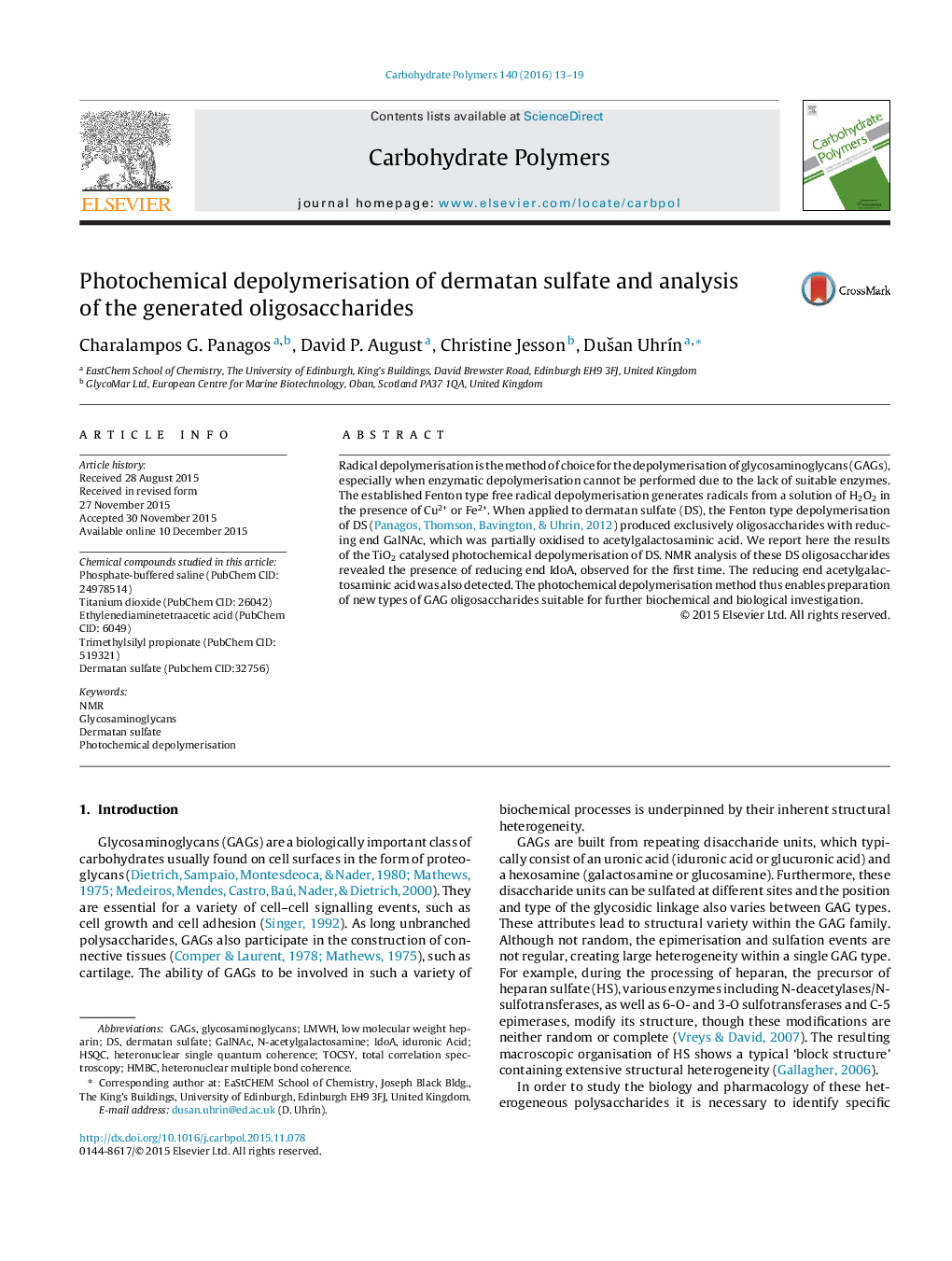| Article ID | Journal | Published Year | Pages | File Type |
|---|---|---|---|---|
| 1383430 | Carbohydrate Polymers | 2016 | 7 Pages |
•Free radical photochemical depolymerisation generates GAG oligosaccharides.•The structures of DS oligosaccharides were studied by NMR.•Oligosaccharides with uronic acid as the reducing end monosaccharides were found.•Acetylgalactosaminic reducing end monosaccharides were also generated.•No desulfation of the generated oligosaccharides was found.
Radical depolymerisation is the method of choice for the depolymerisation of glycosaminoglycans (GAGs), especially when enzymatic depolymerisation cannot be performed due to the lack of suitable enzymes. The established Fenton type free radical depolymerisation generates radicals from a solution of H2O2 in the presence of Cu2+ or Fe2+. When applied to dermatan sulfate (DS), the Fenton type depolymerisation of DS (Panagos, Thomson, Bavington, & Uhrin, 2012) produced exclusively oligosaccharides with reducing end GalNAc, which was partially oxidised to acetylgalactosaminic acid. We report here the results of the TiO2 catalysed photochemical depolymerisation of DS. NMR analysis of these DS oligosaccharides revealed the presence of reducing end IdoA, observed for the first time. The reducing end acetylgalactosaminic acid was also detected. The photochemical depolymerisation method thus enables preparation of new types of GAG oligosaccharides suitable for further biochemical and biological investigation.
